#California Golden Trout
Text

fishtober day 03:
california golden trout (oncorhynchus aguabonita)
#inktober#fishtober#freshwater fish#california golden trout#nature art#queer#trans#digital art#my art#wow!!! these take much longer than id thought. tahts alright because this is a gorgeous fish#goldeen trout i love you#ans this ones kinda halloweeny!!
5K notes
·
View notes
Text
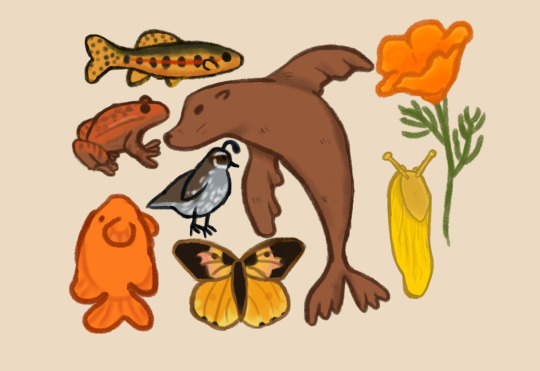
A few extant California state animals!
Plus a California Sea Lion and a Banana Slug.
#jays art#artists on tumblr#california#california sea lion#banana slug#garibaldi#california dog-faced butterfly#california red-legged frog#california quail#california golden trout#state animals#zoology#california poppy
26 notes
·
View notes
Text


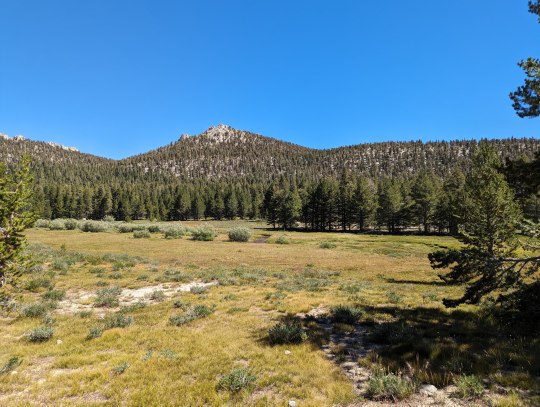
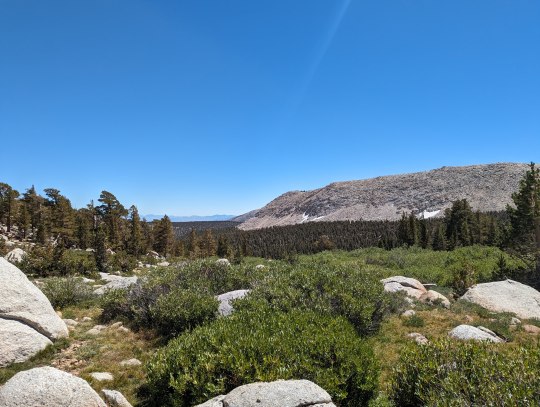
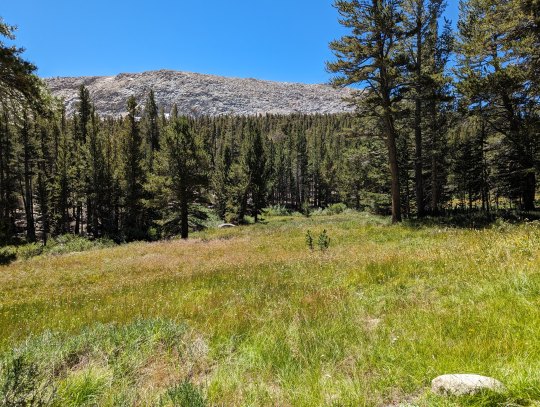

Cottonwood Lakes backpacking
near Horseshoe Meadows, in Golden Trout Wilderness, in Inyo National Forest, CA
#cottonwood lakes#golden trout wilderness#inyo national forest#horseshoe meadows#views#nature#backpacking#summer#california
3 notes
·
View notes
Text


Cottonwood Lake 3, Golden Trout Wilderness, Inyo National Forest, CA
#cottonwood lakes#golden trout wilderness#inyo national forest#california#summer#sierra nevadas#backpacking#watercolor#nature#landscapes#painting#drawing#ink#art#in the field
1 note
·
View note
Text

fishtober day 3: California golden trout
18 notes
·
View notes
Text


Added These plus an Anon's request for Coelecanths (sorry I somehow messed it up and your ask is gone now). Also updated the Sturgeon they were a bit too big.
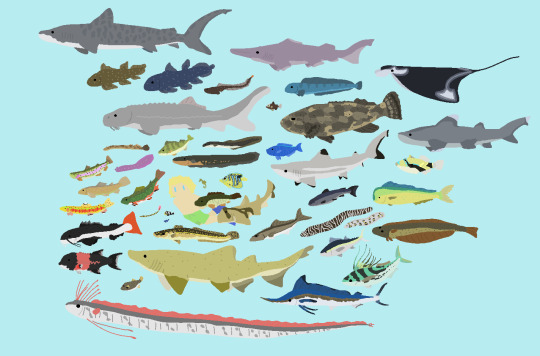
Sorry for losing your ask again anon!
Oh and the list of fish will be under the cut if anyone wants to see! They're in order in which I drew first.
Common carp
Electric eel
Brook trout
White sturgeon
Oman bullhead shark
Banded pipe fish
Sand tigershark
Hagfish (technically a fish)
Devil's hole pupfish
Brown trout
Regal angelfish
Burbot
Cobia
Black-tip reef shark
Redtail catfish
Golden trout
Sockeye salmon
Rainbow trout
Zebra moray eel
American eel
Goliath grouper
Blackfin tuna
Longbill spearfish
Roosterfish
European perch
Blue parrotfish
Halibut
Snowflake moray eel
Mahi-Mahi
Reef triggerfish
Atlantic wolffish
California sheephead
Sea lamprey (still technically a fish)
Giant oarfish
West indian coelacanth
Indonesian coelacanth (anon didn't really specify which species so)
Goblin shark
White spotted puffer
Reef manta ray
Saddleback clownfish
Tiger shark
Gulper eel
Pacific barreleye
White-tip reef shark
2 notes
·
View notes
Text
Goldtap Lubricants Specialities Private Limited
Allan wrasse climbing gourami amur pike Arctic char, steelhead sprat sea lamprey grunion. Walleye poolfish sand goby butterfly ray stream catfish jewfish.
Spanish mackerel yellow weaver sixgill. Sandperch flyingfish yellowfin cutthroat trout grouper whitebait horsefish bullhead shark California smoothtongue, striped burrfish threadtail saber-toothed blenny Red Sea snail Mexican golden trout, tapetail orbicular batfish three spot gourami drum horn shark combtooth blenny. Rainbowfish hagfish, blacktip reef shark pineconefish, Bitterling
Website: http://goldtaplubricant.com/
Add: 523 Sylvan Ave, 5th Floor Mountain View, CA 94041USA
Phone: +1 987 654 3210
Email: [email protected]
#goldtaplubricant
1 note
·
View note
Text
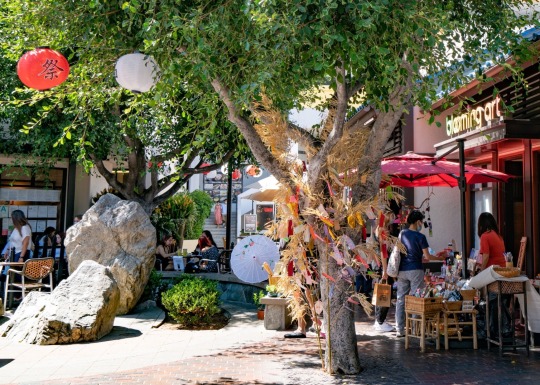
Shops and restaurants in Los Angeles’s Little Tokyo keep alive the history of the city‘s Japanese American community. Photograph By Aaron Perez, Bauer-Griffin/GC Images/Getty Images
These Little-known Sites Help Families Connect To Asian American History
From Chinese railroad workers in Utah to Filipino shrimpers in Louisiana, here are tales of immigration, struggle, and belonging.
— By Lisa Kwon | May 6, 2021
Tie Sing knew how to make a meal to remember. The Chinese American backcountry cook once prepared a dinner for U.S. Geological Survey explorers that was so memorable the mapmakers lavishly detailed each course—soup, trout, fried potatoes, string beans, fresh bread, hot apple pie, coffee—in reports about their two-week expedition through what is now Yosemite National Park.
But not many people remember Sing—and many other Asian American workers before and after him, who remain footnotes in history books and curricula. Yenyen Chan, a park ranger at Yosemite, hopes to change that. She helps interpret stories of Chinese history, such as Sing’s, in the park, noting that “Asian Americans have been in this country and contributed for a very long time.”
From national parks to ethnic neighborhoods, in-person visits (once it’s safe and destinations re-open) give students well-rounded experiences to bring into their classrooms. Anantha Sudhakar, a professor in the Asian American Studies department at San Francisco State University, says that “it’s become really important for families to complement a child’s school learning” with personal experiences.

Backcountry cook Tie Sing (standing) poses with the Mather Mountain Party during a 1915 expedition that laid the groundwork for national parks. Yosemite’s Sing Peak is named after him. Photograph By DR. Gilbert H. Grosvenor National Geographic Image Collection
Michelle Magalong, president of Asian and Pacific Islander Americans in Historic Preservation, says she feels more prepared than ever to welcome people who want to learn. “History matters when it’s deeply rooted in what is relevant and happening today,” she says.
As families start planning summer travel, these important sites across the United States can help broaden perspectives on American history and heritage.
Parks and Landmarks
At national parks, families can gain historical insight by getting outdoors and getting active. “Many families really like to have their kids exposed to as much as possible with hikes or park service-led programs,” says Chan, who often sees families return several times for different history walks through Yosemite.
This summer, Yosemite opens an exhibit about the Chinese workers who helped build the infrastructure for the national park. More experienced adventurers can embark on a challenging off-trail hike to Sing Peak to learn more about the cook’s legacy.
After diving into the histories of Chinese railroad workers at Utah’s Golden Spike National Historical Park, travelers can take selfies at the Chinese Arch, which honors the workforce that shoveled, drilled, and hammered their way through the Sierra Nevada and Great Basin regions to create the first transcontinental railroad.
The stories of Japanese American families incarcerated during World War II are explored at former internment camps such as Minidoka, in Idaho, and Manzanar, in California. Lesser known as a site of internment is Hawai’i Volcanoes National Park, where more than 100 people were detained at a military camp inside the park.
Even while their families remained imprisoned, many Japanese Americans served in the U.S. military during the war. In Washington, D.C., travelers can learn about their contributions at the Japanese American Memorial to Patriotism During World War II, centered around a bronze sculpture of two cranes.
Neighborhoods For Food and Festivals
To find the neighborhoods built and vitalized by Asian American groups, such as the nation’s Chinatowns, “follow the labor,” says Jenny Banh, a professor in Asian American Studies at California State University, Fresno. “Follow the Asian labor and you will find the richest stories.”


Left: A family has lunch at the Hmong Village shopping center, one of two Hmong farmers markets in St. Paul, Minnesota, on Aug. 3, 2019. Some 66,000 Hmong live in the St. Paul-Minneapolis area—the largest Hmong population in the world. Right: On Aug. 3, 2019, a vendor puts out fresh vegetables at the Hmongtown Marketplace, which houses more than 125 businesses. Today’s Hmong residents can trace their lineage to refugees who fled Laos in the 1970s. Photographs By Jack Kurtz, Zuma Press/Alamy
Filipino fishermen who arrived in Louisiana in the mid-18th century established what some historians consider the first Asian settlement in the U.S., south of New Orleans. The village of Saint Malo once comprised houses built on stilts over swampland but was destroyed in a hurricane. The Filipino community’s contributions to Louisiana’s shrimping industry are now memorialized with plaques at the former locations of both Saint Malo and a later settlement, called Manila Village.
In St. Paul, Minnesota, foodie families can order stuffed chicken wings to eat while walking up and down the vibrant aisles of the Hmongtown or Hmong Village farmers markets. The Twin Cities is home to a thriving community of Hmong people with lineage that dates back to 1975, when refugees relocated to the area from their homelands in Laos, and eventually worked in agriculture.
An annual Sikh festival in Yuba City, California, home to one of the largest Sikh populations in the country, features decorative floats, a bazaar, and 200,000 free plates of hot meals to tens of thousands of attendees of all faiths. Now nicknamed the “Mini Punjab” of the U.S., Yuba City attracted the Sikh population with opportunities in farming and other agricultural jobs.

This photo depicts Joe Gow Nue and Co. Grocery and Meat Market in Greenville, Mississippi, in 1939. Chinese-owned grocery stores served Black communities when the region was more starkly segregated in the early 20th century. Mississippi Delta Chinese Heritage Museum preserves this history. Photograph By Maruon Post Wolcott Library of Congress
In Los Angeles’ Boyle Heights, indulge in a comforting sukiyaki bowl at Otomisan Restaurant, one of the last Japanese legacy businesses in the neighborhood. Boyle Heights was a haven for Japanese Americans after World War II, who struggled to find new homes due to racist neighborhood “covenants,” which restricted the areas where people of color could live in Los Angeles.
A small community of Korean-Uzbeks—or Koryo-saram—thrives in the Brighton Beach neighborhood of Brooklyn, New York. Restaurants like Cafe Lily keep the culture alive with its fusion of Central Asian and Korean cuisine in dishes such as kuksi (a cold noodle soup). The community has its roots in Central Asia, where Koreans who had been living in Russia since the early 19th century were deported during Joseph Stalin’s reign. Today, Brighton Beach is home to many Koryo-saram, given its notable population of Russian-speaking immigrants.
Art Spaces and Museums
Galleries and museums—from the Smithsonian’s National Museum of Asian Art to the Wing Luke Museum in Seattle—often have public programs geared to families that give context to the art hanging on the walls or the objects in cases.

The Wing Luke Museum, in Seattle’s International District, is the only community-based museum in America dedicated to the history of Asian Pacific Americans. It’s a designated historic site and a National Park Service affiliate. Photograph By Paul Christian Gordon, Alamy
The Asian Arts Initiative, in Philadelphia, organizes a summer camp and workshops to engage children in the creative process of visual arts and performances.
Teens can take narrative prose workshops at Kearny Street Workshop in San Francisco, one of the oldest organizations that work with Asian American artists in multidisciplinary fields.
Kids and teens who are fascinated by architecture may enjoy walking through the expansive George Nakashima Woodworker Complex, in New Hope, Pennsylvania, to marvel at the buildings that the renowned architect and furniture designer had a hand in creating.

Two people interact with an exhibit at the Hawai’i Army Museum Society, which recounts the state’s military history, from before Christopher Columbus's day to the Vietnam War. Photograph By Jeffrey Greenberg, Universal Images Group/Getty Images
Art can also be right outside your door. For Freedoms has launched its billboard campaign throughout the U.S., showcasing work by Asian or Pacific American artists.
Opportunities to learn about Asian American culture and history are everywhere, but ultimately, cultural literacy starts with individual relationships, says Pritpal Kaur, education director of the Sikh Coalition. “Getting an authentic review of our experience starts with one-on-one conversations.”
1 note
·
View note
Text
WFS 325 - Kern River Fly Fishing with Guy Jeans - Skwala Hatch, Golden Trout
Show Notes: https://wetflyswing.com/325
Presented By: Togens Fly Shop, Zoe Angling Group, Angler's Coffee, Reyr Gear
Sponsors: https://wetflyswing.com/sponsors
Guy Jeans, owner of the Kern River Fly Shop, host of the Kern River Fly Shop Podcast, and vocalist of the band Stoneflys; is here to take us on a wild ride up and down the Kern River. We talk about the 10 native species in California including the golden trout. We find out what fishing is like in different parts of the Kern River, the seasons and hatches, gear, techniques, and flies they use.
We also dig into Guy's newfound passion in podcasting - talk about some of the remarkable guests he's had on the podcast. Plus, we hear some of his band's original songs and I got to tell you.. they're pretty awesome!
Kern River Show Notes with Guy Jeans
05:15 - There's a great fly fishing club in Ventura called, Sespe Fly Fishers - they helped Guy get started in tying flies, building rods, casting, etc.
05:45 - We talk about Ska music
06:45 - The Kern River is in the Sierra mountain range, Southern Sierra - 3 hours North of Los Angeles. The river is about 170 miles long.
07:30 - The most popular fish that people come to fish for is the native California Golden trout, the Kern river rainbow, and the little Kern Golden trout
09:30 - Guy went permit fishing in Xcalak Mexico
11:00 - They also have the tailwater called the lower current, below a giant lake where they fish smallmouth and largemouth bass - they fish here in June
12:00 - They also fly fish for carp in Lake Isabela - they held carp fly fishing tournament in May
15:00 - They do 4x4 trip where they have full outfitter camps with a chef and tents
16:00 - Their hot season is in July, August, and part of September. March and April is a prime time to fish in their section on the Kern river - salmon fly hatch and mayfly hatch
17:00 - People took some of the Golden trout and put them in places like Wyoming and Montana
17:55 - The California Department of Fish and Wildlife has a program called, Heritage Trout Program - a mini-contest within California that challenge people to catch the 10 native trout species in California. If you catch 6 of the 10 natives, you get a certificate that has prints of the species you caught drawn by Joseph Tomerelli
19:00 - Guy mentions the 10 Native Trout in California
20:20 - There are 2 forks - North Fork Kern River (flows into Kernville and comes down from Mt Whitney) and South Fork Kern River (doesn't get blown out, you can fish it anytime)
23:10 - It's mostly dry fly fishing for the wild golden trout - from downstream to upstream. Presentation is the key.
24:30 - The typical flies they use are stimulators, smaller stimulators, parachute adams, royal wulf, and ants
25:15 - The gear recommended are super light - 2 wt or 3 wt
25:30 - The biggest golden trout you can probably catch is 15 inches - typical is 6 to 12 inches
28:10 - Tim Landwehr was on the podcast at WFS 273 where we talked about smallmouth and largemouth bass
28:30 - Guy is holding casting clinics in California
29:00 - They use pontoon boats because of the river structure
30:00 - They have an Instagram called Kooks of the Kern where people post funny photos of what they do on the Kern river
33:00 - There's a wild trout section in the wilderness area part of the North Kern and they fish stonefly patterns. Nymphing works good there too. They also have chinook and kokanee salmon in lake Isabela.
36:20 - In Fall, they have caddis, mayflies, and some tricos later in the season
37:30 - Their website is the best resource they recommend to people who want to learn more about Kern river fishing. You can listen to their podcast there too.
39:10 - Guy had a guest on his podcast who's a fishing game warden - he told a story of when he confronted some gang members that were fishing
39:40 - I read a book years ago called, Wildlife Wars: The Life and Times of a Fish and Game Warden
41:00 - Guy tells us about their location which is close to the ocean and they would fish the surf in Ventura - they fish corbina, surfperch, and leopard sharks
41:40 - We had an episode about corbina and surf fishing with Al Quattrocchi at WFS 219
42:55 - People sometimes come to Guy's studio to record the podcast
43:44 - Kern River Podcast is on Waypoint TV and Anchor. I use Libsyn for the WFS podcast and Buzzsprout for another podcast we do
47:40 - Guy tells us about his music journey in the 80s and 90s - Ska music
51:00 - Merle Haggard has a song called, I'll Never Swim Kern River Again - scroll below to listen
56:15 - Eeland Stribling was on the podcast at WFS 309 - Eeland is a standup comedian
57:30 - Guy was on the Heidi and Frank show called Stay or Go - apparently, people like their songs
59:10 - Guy tells the story of when they played at a huge venue in Mexico and their amps blew up because of electric surges
1:00:50 - For sidelines, Guy did some commercials in Hollywood as the fly fishing guy in the background. He also worked with actors like Christian Bale in the movie, Vice - he taught Christian how to cast
1:05:00 - Guy shares some tips - Fish from downstream to upstream, stay hidden - be stealthy, good presentation, good cast
1:03:00 - May and June are the best times to fish for the golden trout - the Fall is good for the kern river rainbows. Summertime is good for the carp and smallmouth bass
1:12:30 - They have a brewery in Kern called, The Kern River Brewery - they won many years in a row at the Great American Beer Fest. One of their best beer is the Citra IPA
Kern River Conclusion with Guy Jeans
So there you go. Another great interview with a fellow podcaster. I always get excited whenever I talk to people who share the same interest. Hopefully, we could put together an episode with me as a guest on his show too. But we'll see.. I'm not sure if I make a good guest. What do you think?
I'm really amazed at all Guy has going - the fly shop, the classes, the podcast, the band. He surely is living the life he loves and like he said, none of it feels like work.
Oh and Guy's band, Stonefly.. man they create good music! Their songs are definitely going on my playlist. If you haven't heard them yet, you're missing out on some good stuff!
But then back to the Kern River.. if you want to catch some of those beautiful golds, you know where to find them. Try and catch all 10 California native trout species. Let us know how about your experience. Send me a message at [email protected] or DM me on Instagram @wetflyswing
Show Notes: https://wetflyswing.com/325
Check out this episode!
0 notes
Photo

California Golden Trout, Oncorhynchus aguabonita
8 notes
·
View notes
Photo


Forgot to post these here.
They’re kinda suffering from my poor lighting and lazy color-correction. But I think they look pretty good in person!
There are 8x10s and are a gift for my dad and his wife. I’m working on a larger version of both :)
#fish#trout#salmon#golden trout#brook trout#north american animals#north american fish#state fish#california#michigan#watercolor#painting#traditional#mixed media#scientific illustration#Natural History illustration#sciart#scicomm
80 notes
·
View notes
Text
need to step up my goat designing game rn
2 notes
·
View notes
Text
Animal Crossing Fish - Explained #88
Brought to you by a marine biologist who thinks y’all are golden...
CLICK HERE FOR THE AC FISH EXPLAINED MASTERPOST!
I had to, lol, but seriously - thanks everyone once again for sticking with the series for so long. I can’t believe we’re really pushing 100 entries - just 12 more to go! Tomorrow we’ll finish up with the salmonids, so drop me an ask if there are any fish you’d like to see next! Today’s fish is the Golden Trout, and I gotta say once again that ACNH really killed it with the graphics on this one. The coloring is so accurate, it took only five minutes to pinpoint this one to sub-species! Not only that, but ACNH also did the thing justice in its habitat and rarity!

The Golden Trout is rare af. Get bait and get lots of it, because you will be spending some time on the clifftop trying to catch this beauty. There’s good reason for that, though. Like we’ve said with other very rare fish in ACNH, they are rare because in real life, they are Endangered. Same goes for this fish.
It’s actually pretty incredible how unique and restricted this animal’s range is naturally. Now, above, I said that this was a sub-species, and it is. The Golden Trout is actually a very unique and even more gorgeous version of the common Rainbow Trout, (Oncorhynchus mykiss), for which there are about 15 subspecies. Here’s what a “typical” Rainbow looks like:
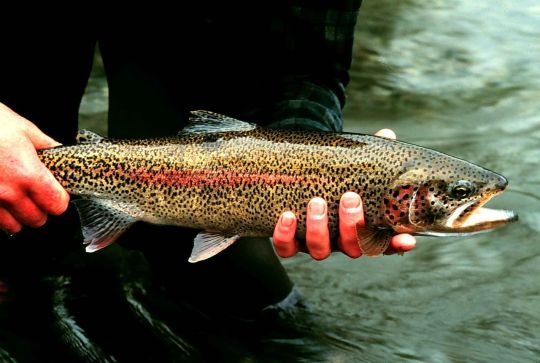
By Lisac Mark, U.S. Fish and Wildlife Service
Some sub-species of Rainbow are anadromous like other salmon species - they live most of their lives out in the ocean before returning to their birth rivers to spawn. Unlike some of the salmon we’ve talked about, like the cherry and chum, these anadromous varieties are iteroparous, meaning they don’t die after that first time. They’re called “steelhead” in the US and Canada.
However, there are also freshwater varieties, for which today’s subspecies is a part. These frsshwater-onlys usually grow smaller than their oceanic counterparts and some of them look very different than your typical Rainbow. Today’s fish is the California Golden Trout, (O. m. aguabonita), the state fish of California:

By Rayfound - Own work, Public Domain, https://commons.wikimedia.org/w/index.php?curid=4415212
These are native to just one river system in California, the Kern River. There are 3 sub-species of Rainbow Trout native to this river system and although they look relatively the same, ACNH did a damn good job making it clear this was O. m. aguabonita.

^From the University of California. Yellow section is for our fish today.
The California Golden Trout is such a popular sport fish and conservation efforts and transplants have happened all over the state to protect this fish. Nevertheless, its numbers have been dropping for decades. Introductions of other trout species that prey upon it or out-compete it for food, as well as introductions of regular Rainbows that hybridize with them are steadily pushing the fish to critically imperiled levels. It’s a Species of Concern in California. So explains the rarity. And of course, today’s fish also loves cool, strictly fresh, headwaters, so explains the reason why it can only be found on the clifftop during Spring and Fall.
And there you have it. Fascinating stuff, no?
#golden trout#california#fish#acnh#animal crossing#animal crossing new horizons#science in video games#animal crossing fish explained
21 notes
·
View notes
Photo
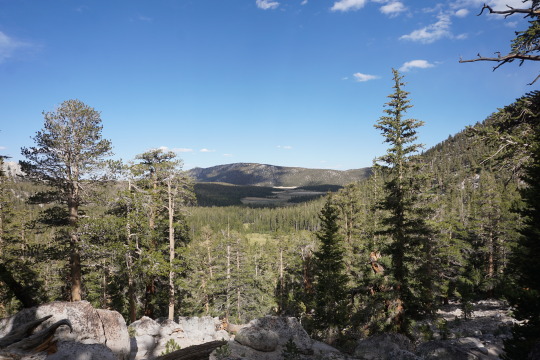


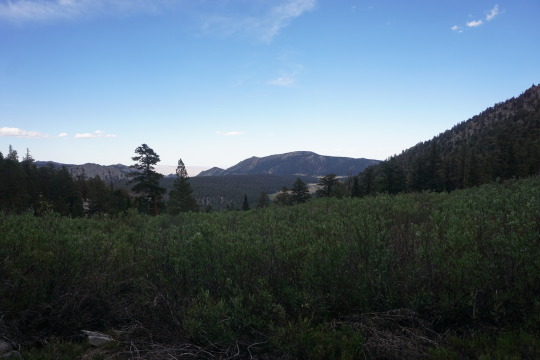
Views of Horseshoe Meadows seen hiking up to Cottonwood Pass in Golden Trout Wilderness, which is in Inyo and Sequoia national forests, California
Great place to acclimate before hiking Mt Whitney
#cottonwood pass#nature#views#landscapes#hiking#camping#sierra nevadas#horseshoe meadows#golden trout wilderness#inyo national forest#sequoia national forest#california#Summer
5 notes
·
View notes
Text
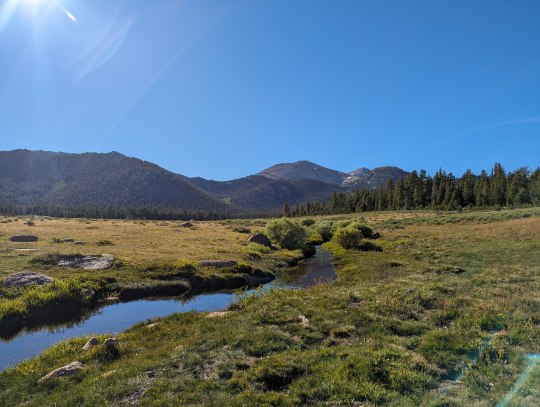



Horseshoe Meadows in Golden Trout Wilderness
in Inyo National Forest, California
#hiking#camping#california#inyo national forest#golden trout wilderness#watercolor#landscape#nature#summer#horseshoe meadows#sierra nevadas#painting#drawing#ink#art#in the field
1 note
·
View note
Photo

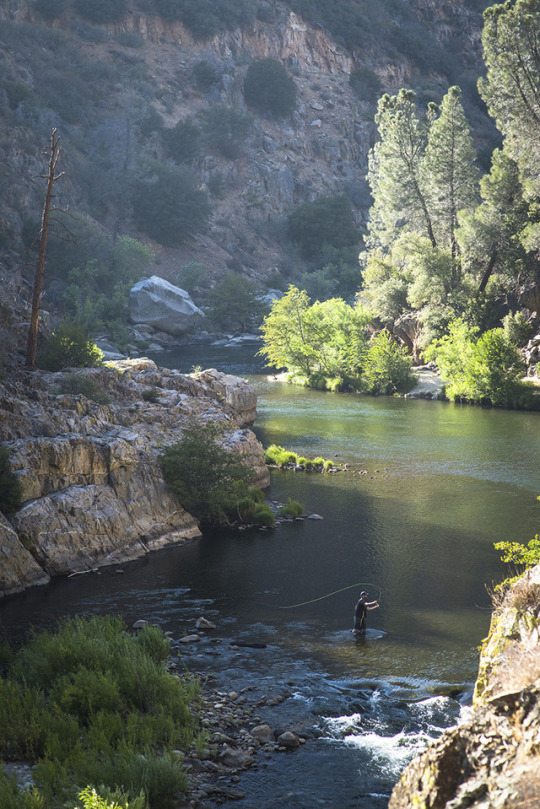
Fly fishing the Kern River in California.
#Kern River#Fly Fishing#fishing#golden trout#sequoia national park#river#california#nikon#adventure#outdoors
154 notes
·
View notes